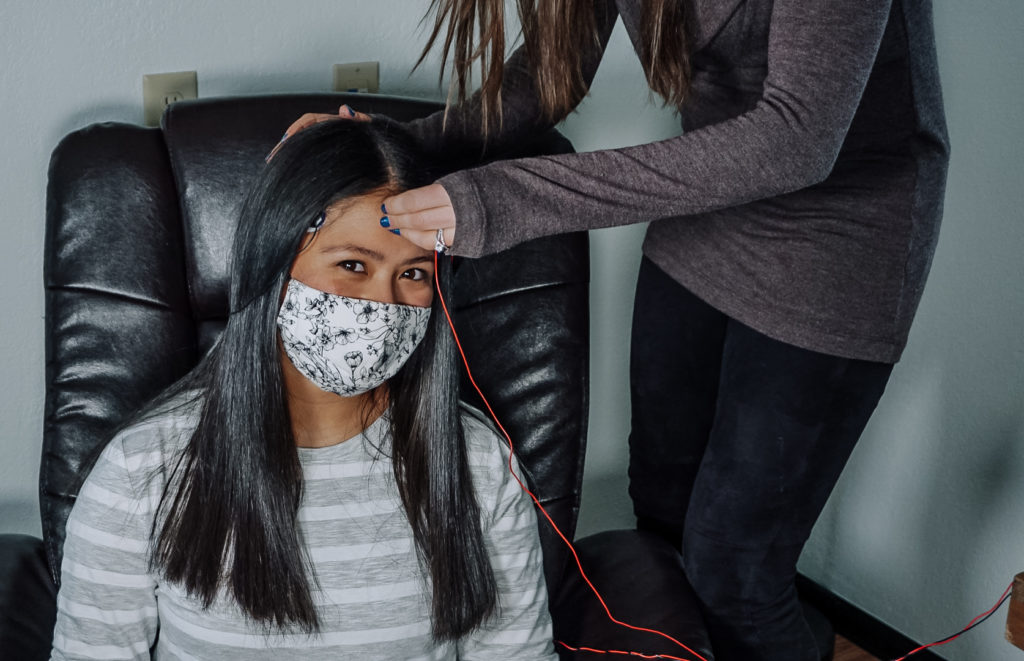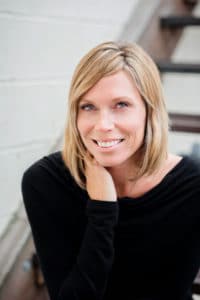“In my opinion, if any medication had demonstrated such a wide spectrum of efficacy, it would be universally accepted and widely used. It is a field to be taken seriously by all.”
Frank Duffy, M.D. Director, Developmental Neurophysiology Children’s Hospital, Boston Duffy F, Editorial, Clinical EEG,31,(1), 2000.
Sometimes, issues seem so big it can feel like nothing will help. When your child is on ADHD medication, and it’s not working well enough, or nothing is working for big outbursts, anger, and out of control behavior it can feel frustrating and frightening. There is no medication to help with learning issues if your child is struggling in school.
Other times, it may be you looking for help. You may be experiencing a consistently low level of depression, anxiety, memory, or generally feel overwhelmed. Sometimes, talk therapy is not enough to provide the relief you are looking for.
Talk therapy may not be enough because the issue may be with your brain. Specifically, with your central nervous system. Due to a combination of genetic factors, environmental factors, and epigenetics (how your behaviors and environment can cause changes that affect the way your genes work), your brain may not be performing as well as you’d like it to.
What would it be like to have your brain perform better? What would it be like to perform better, feel better, think better, and focus better? This is possible because of a therapy called neurofeedback training. It’s also known as EEG-biofeedback. It is biofeedback for the brain and works about 80% of the time in helping all of these things.
Often, things occur in our lives, or our kids lives that are out of our control. Having ADHD, a learning disability, emotional, angry outbursts, and mood issues can feel heartbreaking as a parent to watch your kid struggle. Or, a history of concussions, a traumatic brain injury from an accident, or a memory deficit and overwhelm may make the daily tasks of life feel like too much to get through.
When these things happen, we don’t show up in life as present as we’d ideally like to be with ourselves and our loved ones. We may struggle through tasks like budgeting, multi-tasking family life, or doing a great job at work. It can all feel like too much. The connections that are not formed as ideally as we’d prefer (neural pathways) may be impacting how we are making the connections in our world with our kids, spouse, employer, and friends.
This can be a hard place to operate from. This is where neurofeedback can help.
What is Neurofeedback?
Neurofeedback, also known as EEG-biofeedback, is brainwave training. It helps people alter their brainwaves. When information is made available to the person about their own brainwaves, they can change them. This is important because brainwaves impact performance, mood, cognition, focus, and learning.
Neurofeedback is a process of measuring a person’s EEG, recording and communicating it back to the person to improve their neural communication. Oscillations are measured through an electroencephalogram, which measures brain waves.

Through operant conditioning, neurofeedback is conducted by placing electrodes on the scalp that measure brain waves in real-time. Instantaneous feedback is provided to the person allowing them to influence their brainwaves.
Training is done by playing a video game or watching movies that are modulated in and out to provide visual feedback in what your brain is doing. Your brain controls what happens in the video game, and what you see on the screen while watching the movie.
When you hit the pattern we are asking your brain to hit, you see the movie. When you don’t, it fades out, providing feedback to operate in the pattern we are asking it to.
Dr. Cory Hammond from the University of Utah explains it as reconditioning and retraining brainwaves to a more optimal pattern. There is no electrical activity input to the brain, only recording and sending surface electrical data back to the person training so they can see what their brain is doing and learn a new pattern.
Neurofeedback can be likened to an exercise-training program by strengthening neural pathways while increasing flexibility and mental endurance.
Neurofeedback is a slow, gradual process likened to physical therapy for the brain. When gains are made, the results are long-lasting, directly impacting symptoms, and directly training the central nervous system.
Neuroplasticity is the result. This is a bottom-up approach training the underlying physiology that creates troubling symptoms.
The brainwave levels neurofeedback clinicians are interested in include delta, theta, alpha, and beta. Delta brain waves are measured at 0.5 to 3.0 Hz and are present during sleep. Theta brain waves are measured at 3.0 to 8.0 Hz and occur in-between sleep and wake mode, often in a light sleep. Alpha brain waves are measured from 8.0 to 13 Hz and indicate a calm, focused state. Beta brain waves are measured from 13 to 32 Hz and display an alert, focused attentive state. There are no good or bad brainwaves. When there is too much, or too little, and where that is taking place, functioning is impacted.
What does neurofeedback help with?
There are many approaches to neurofeedback. The type of neurofeedback I do is based on phenotypes discovered by a brain scientist, Jay Gunkleman. We start with collecting a thorough history and conducting a qEEG, also known as a brain map. The brain map shows one or more phenotypes (an area of difficulty that creates issues) that direct the treatment plan.

Phenotypes can indicate dysregulation in the brain including inflammation, brain fog, focal abnormalities, under and over-arousal, pessimism, low energy, low motivation, mood issues, memory issues, obsessiveness, cognitive inflexibility, metabolic and vitamin deficiencies, focus issues, hyper-focusing and adrenal issues, obsessive thoughts, tension, sleep disturbances, brain speed, racing thoughts, cortical instability due to concussions or traumatic brain injury, and more.
Neurofeedback is used in peak performance training for athletes and executives, ADHD, memory enhancement, stress reduction, anxiety disorders, symptoms of autism, PTSD, developmental trauma, attachment disorders, seizure disorders, concussions, and traumatic brain injuries, depression, learning disorders, strokes, and conduct disorders.
Clients train twice weekly for an average of 30-40 sessions. People go until their goals are met. In this slow, gradual process, most people notice something by session 10.
Between 15-20 sessions, we remap and retest to qualify and quantify gains and determine the direction to go next in the treatment plan. Research demonstrates an 80% success rate, and when neurofeedback does not work, it often indicates something greater is occurring biologically.
Support for neurofeedback
These are just some of the raving reviews for neurofeedback.
“The American Academy of Pediatrics supports Biofeedback rating efficacy at ‘Level 1 Best Support'”
September 2010 American Academy of Pediatrics analysis of Evidenced-Based Child and Adolescent Interventions.
“Overall, these findings support the use of multi-modal treatment, including medication, parent/school counseling, and EEG biofeedback, in the long-term management of ADHD, with EEG biofeedback, in particular, providing a sustained effect even without stimulant treatment…parents interested in non-pharmacological treatment can pursue the use of complementary and alternative therapy. The therapy most promising by recent clinical trials appears to be EEG biofeedback.”
Katie Campbell Daley, Children’s Hospital Boston and Harvard Medical School The journal Current Opinion in Pediatrics: April 2004 – Volume 16 – Issue 2 – p 216.
“The EEG and Clinical Neuroscience Society supports neurofeedback in the Treatment of Seizure Disorders, saying: “Based on this meta-analysis, EEG operant conditioning was found to produce a significant reduction in seizure frequency. This finding is especially noteworthy given the patient group, individuals who had been unable to control their seizures with medical treatment.”
Gabriel Tan, John Thornby, D. Corydon Hammond, Ute Strehl, Brittany Canady, Kelly Arnemann and David A. Kaiser. Meta-Analysis of EEG Biofeedback in Treating Epilepsy, Journal of Clinical EEG & Neuroscience, July, 2009.
“Advantages to QEEG-Neurotherapy are that it is noninvasive, self-regulated, and has no known side effects, or systematic or pharmacological interactions. It is effective across a wide range of conditions and age groups.”
Denise Malkowicz, Jolene Ross, James Caunt “Integrative Approaches to Brain Rehabilitation”, Chapter 12, Integrative Rehabilitation, in Integrative Psychiatry, Monti, D. & Beitman, B., (Editors), Weil Integrative Medicine Library, Oxford Press.
In my opinion, if any medication had demonstrated such a wide spectrum of efficacy, it would be universally accepted and widely used. It is a field to be taken seriously by all.”
Frank Duffy, M.D. Director, Developmental Neurophysiology Children’s Hospital, Boston Duffy F, Editorial, Clinical EEG,31,(1), 2000.
“EEG biofeedback meets the American Academy of Child and Adolescent Psychiatry criteria for clinical guideline (CG) for treatment of ADHD, seizure disorders, anxiety (OCD, GAD, PTSD, phobias), depression, reading disabilities, and addictive disorders. This suggests that EEG biofeedback should always be considered as an intervention for these disorders by the clinician.”
The editors of a special issue of Child and Adolescent Psychiatric Clinics of North America Volume 14, Number 1 January 2005.
Here are some neuofeedback websites to learn more about it.
Neurofeedback websites
Amazingly, our bodies and brains can change when we tell them specifically how. Interested in learning more?
Schedule a consultation.
Dr. Nicole McGuffin is a relationship and trauma expert, accomplished in neurofeedback and therapy with more than 15 years of expertise in psychology, neurophysiology, and psychobiology. Dr. McGuffin empowers people to create real healing and transformation.
Dr. Nicole is licensed and board-certified in neurofeedback. She is a fellow of The Association for Applied Psychophysiology and Biofeedback (AAPB) for a lifetime of significant contribution to the field.



